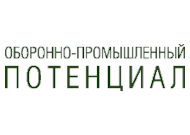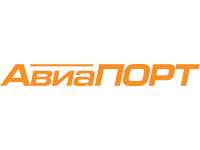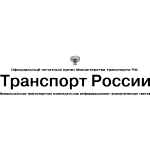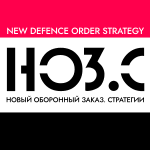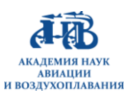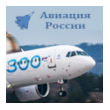HeliRussia in wake of its 10th anniversary
Ten years have passed since the first HeliRussia. Time has flown very swiftly. The expo has been and remains constantly moving forward, and we have tried to capture all the new trends and tendencies in the industry’s development. During this time nearly all models of helicopter equipment produced in Russia and abroad have been presented at HeliRussia. Visitors to this prestigious fair which regularly arranges world premieres of helicopters and aviation and ground-based equipment have received an opportunity to learn about the samples of latest technologies. The number of participants and visitors at HeliRussia has grown year by year.
The International Helicopter Industry Exhibition approached its first significant anniversary with a valuable background. And, as always, HeliRussia will sum up achievements of the year passed, and demonstrate new developments and current industry trends. We are going to highlight a few of them.
The year 2016 turned out to be successful for the Russian helicopter industry – deliveries of the “Arctic” helicopter Mi‑8AMTSh‑VA under a state defense order were started; the upgraded Mi‑28NM completed its first flight; the basic certificate for the Mi‑38 was obtained; and the promising Ka‑62 performed its first hovering. Putting first Ansat commercial helicopters into operation became one of the major events for civil aviation.
On this background of positive news, a certain drop in helicopter production at plants of the Russian Helicopters comes to have little significance – altogether the company produced only four less helicopters compared to previous year.
There was also a slight decrease in foreign-made helicopters deliveries in 2016 as compared to the preceding period, namely by six units.
The crisis events that have been taking place for three years now have not gone unnoticed in the helicopter industry either. A substantial reduction in deliveries of foreign-made helicopters seen in 2014 has continued up to date, and constant decommission of helicopters (primarily due to retiring of the Mi‑2 type) has led to a reduction in the number of helicopters in the Russian civil aviation fleet. As of January 1, 2017, the fleet was cut by 12 aircraft as compared to the previous year. This is the first reduction over the last 9 years.

In 2016, thirty helicopters manufactured abroad were imported to Russia and two Bell 407GXP helicopters were produced in Russia at the Urals Civil Aviation Plant in Yekaterinburg. Reduction in deliveries from abroad that began in 2015 has continued; in that year deliveries shrank to less than a third compared to the previous year (121 helicopters were supplied in 2014 and 36 in 2015). Now the shrinkage has slowed down, and in percentage terms helicopter supplies from abroad made 81% of the 2015 values.

According to data from AOPA-Russia (Aircraft Owners and Pilots Association), in 2015 ten Robinson helicopters (six R44’s and four R66’s) were decommissioned due to accidents, while eleven helicopters were imported into the country. In 2016, fifteen helicopters made by this manufacturer were imported into the country (one R22, four R44’s, and ten R66’s), while thirteen aircraft (seven R44’s and six R66’s) were decommissioned. Altogether, 23 helicopters were removed decommissioned due to the accidents in 2016, three of which were Russian-made aircraft.
Deliveries from Airbus Helicopters remained at the 2015 level, and Bell Helicopter and Leonardo experienced faced a decrease in supplies. Regarding helicopters manufactured by Airbus Helicopters and imported into Russia, it is fair to say that three helicopters may not yet be operated for technical reasons although they are already located in Russia. As for Bell Helicopter – the company showed a slowdown in deliveries as late as in 2016, while the other foreign producers showed decline as of early 2015.
Such situation is typical not only for Russia. According to American General Aircraft Manufacturers Association (GAMA), helicopter deliveries dropped in 2016 by 16.9%.
However, based on forecast made by experts from Aviation Week an industry-related magazine, we will see an increase of 11.5% in the fleet of western civilian helicopters over the next ten years. The global helicopter fleet is expected to increase by 1.2% annually, in Europe the growth will be 0.8%, and on the largest market for helicopter manufacturers – North America – by 0.5% per year.
It is assumed that the light single-engine Airbus Helicopters H125, the Robinson R66, and Bell’s 407 and 505 Jet Ranger X, as well as the mid-sized twin-engine AW139 will become the most in demand helicopters over the next ten years. Among the heavies, we will see a challenging situation as before caused by the crisis in the oil and gas industry. That will make it tough to launch new types of aircraft to market and stir up rivalry competition among the models already existing. Deferred orders for mid-sized and super mid-sized aircraft placed by oil and gas companies will also play a certain part.

In connection with the forthcoming increase in the global fleet, the experts from Aviation Week are predicting an increase in demand in the sphere of helicopter maintenance and repair. Its volume will 16% higher by the end of 2026.
An alternative forecast for the development of the global helicopter market will be submitted by the Honeywell Company within the business program of HeliRussia 2017 at the 9th International Conference “The Helicopter Market: Realities and Perspectives”. The event is organized by the Helicopter Industry Association and the “AviaPort” industrial agency on the expo’s opening day. Quantitative and quality indicators related to the development of the Russian helicopter industry will also be presented in detail at the conference – no single event in Russia is giving such deep insight into the industry analysis.
Many of regular participants have prepared special exhibits and some surprises for the anniversary HeliRussia 2017expo. Therefore, you will be able to discover all of them only by attending the event itself. However, some things are already known today.
As always, the Russian part of the exhibition will put together a lot of participants. Traditionally, a combined exhibition by the State Corporation Rostec and 23 enterprises belonging to its structure, will show their products at HeliRussia: Russian Helicopters, the title sponsor of the exhibition, KRET, RT-Сhemcomposite, Technodynamics, ODK, Rosoboronexport, the Ramenskoye Instrument Design Bureau, AEROPRIBOR-VOSKHOD, NPP Izmeritel, Tekhpribor, NPP Polyot, OPK, OKB Elektroavtomatika, KBPA, Ramenskiy Instrument Design Plant, UKBP, and others.
The Russian Helicopters is planning to showcase Mi‑38 helicopters in a VIP version as well as Ansat’s in the “corporate” and “medical” versions. Moreover, visitors will get to know the plans for further development of the Ansat and Mi‑171A2 helicopters. Unmanned technologies are an important part of modern developments, and the Russian Helicopters will show UAVs developed by its own new design bureau, VR-Technologies.
KRET will showcase the latest samples of onboard radio-electronic equipment, a laser guidance system for surveillance and sighting systems, a helmet-mounted targeting and indication system, and other promising products.
RPKB will demonstrate a unified flight simulator for all types of helicopters, a set of lighting equipment based on LEDs, and, for the first time, the latest set of onboard equipment which will be shown and announced to the public at HeliRussia 2017 expo.
The ORPE “Technologiya” (part of RT‑Сhemcomposite) will present a wide selection of its products from polymer compound materials and structural optical instruments produced by for the helicopter industry, including an electrically heated organic laminated safety glazing for the Ka‑62 helicopter, making it possible to operate the aircraft in Arctic conditions. Samples of heterogenic laminated safety glasses containing polycarbonates are also expected to be shown

NPP AVIAKOM will present its latest developments – the BNP4 set of navigational receivers, the DME1 radar rangefinder, and the RPA‑500 aviation search radar direction finder. These systems have been developed using advanced technologies and are among the best equipment in terms of the technical and functional level produced by leading aerospace manufacturers.
NPP PRIMA will present the KSS‑17 communications set, an advanced radio communications system developed for the latest Mi‑171A2 helicopter, as well as a whole range of state-of-the-art radio communications devices for helicopter equipment, including aviation radio stations of various frequency ranges, airborne intercommunication devices, voice announcement systems, wireless communications devices, and much else.
VNIIRA-Navigator will demonstrate the MSNVO‑2010, a small-sized system for observing atmospheric conditions, a space-saving and energy-efficient device performing the functions of AZN‑V In and TIS‑B 1090ES, as well as ADS‑R of A2 class. This is the first domestic product capable not only of receiving data from the AZN‑V and TIS‑V 1090ES, but also of generating data about atmospheric conditions on indicator units for the benefit of both civil and military aviation. The company will also showcase the BMS‑Indicator navigation system, combining the functional capabilities of a navigational computer, a cartographic information synthesizing system, and the basic functions of a ground proximity early warning system for collision avoidance.

It has already become a tradition at HeliRussia to showcase helicopter industry novelties from concepts and year by year to demonstrate the project development all the way through to the finished sample.
The Afalina, a two-seat ultra-light helicopter by HeliWhale, for the first time has been shown to the public with a mock-up demonstration at HeliRussia 2015. Visitors to the 2017 exhibition will see a real helicopter ready for flight testing. Over the last two years the helicopter program has been actively developed, work has not stayed static, design has been reworked, some of its componentss have been changed, and some of them have gone through endurance testing. In 2015, the Afalina became one of the most talked about news at the expo, and a demonstration of a helicopter ready for flight testing could become one of the HeliRussia 2017 highlights.

HeliRussia 2017 will see the premiere of two models of the new VENTOCOPTER aircraft, which are now prepared for mass production. The VENTOCOPTER is an engine-powered aircraft with a rotor driven by the oncoming air flow. Its rotor and engine are independent systems. A technological advantage of the new aircraft is a stall-free behavior and safe landing even in an emergency situation, stable flight even in strong winds, and low exposure to turbulence. Operational ceiling of starts from one meter above the surface and the physical altitude ceiling exceeds 6 kilometers (if auxiliary oxygen equipment is onboard).
The company GAZNANOTEKH is implementing the VENTOCOPTER project in close cooperation with KEMZ, part of Rostec state company. R&D on VENTOCOPTER are carried out by efforts of their own design office and were started in 2009. Over the time, the best possible design, layout, and technological solutions have been developed. One of the main competitive advantages, apart from the original design, comfortable cabin, and operational convenience, will be the cost of VENTOCOPTER aircraft. It is expected to be several times lower than the cost of helicopters with comparable characteristics.
RD‑Heli will present a new version of the ultra-light coaxial Micron helicopter, which is a continued embodiment of ideas by Dmitriy Rakitskiy, a well-known flight instructor and aviation equipment test engineer. The Micron developed and created by the aircraft designer Valeriy Shokhov in collaboration with a team from Gyroplane.ru is a fast and light “air scooter” boasting high controllability and unique maneuverability. The multirole Micron is ideally suited for all tasks resolved using general-purpose aviation, including as a unmanned drone.
Demonstration of the ultra-light helicopters at the anniversary HeliRussia 2017 to be supported by the developments of Rotorfly – the coaxial R-30 and R-33 models. Two-seated R-30 can be operated from small landing zones and able to carry up to 20 kg of cargo for a distance of up to 400 km. R-33 is the further development of this model. R-33 boosts a modern design and ergonomic interior of the cabin with modern equipment. Ultra-light helicopters from Rotorfly feature small size, low noise, affordable price, convenience and ease of use, along with high safety.

Russia is currently facing the challenge of creating a domestic low-power engine for light and superlight aviation, including for drones. The Engines for Aviation company has been working on solving this issue for more than four years now. Indeed, the basis is formed by the developments which have been carried out from the 1980s. At present, all theoretical research has been confirmed experimentally under laboratory conditions and implemented in the DDA‑120 engine, with a power of 120 h.p., a mock-up of which, created on a 3D printer, will be shown for the first time at HeliRussia 2017. A unique own-produced fuel system ensures high specific power of DDA‑120 engine, comparable to modern gasoline engines and, besides, high efficiency, similar to diesel. The first prototype will be built by the end of 2017.
Aviation engines will also be presented at the booths of the Klimov companies (TV7‑117V turboshaft engine, VK‑800V engine with BARK‑6V automatic regulation system), the ODK‑STAR (NR‑2500 pump-regulator), the VKMS (TV3‑117VMA‑SBM1V turboshaft engine, AI‑9V‑1 auxiliary gas-turbine engine) and the Turbomeca Safran Group.

The multiprofile company RVS‑HOLDING, which last year became the first commercial operator of the new multipurpose Russian helicopter Ansat, will showcase a new configuration of this promising Russian aircraft, which has been dubbed “Hunter”. This helicopter was specially designed for use by individuals for active recreation (hunting, fishing, extreme tourism, etc.). This helicopter can also be used for conducting environmental monitoring of state-held and private woodlands, hunting farms, and fishing grounds.
Aside from the “hunting” version of the Ansat, RVS‑HOLDING will present the its aviation training center providing training for piloting and maintaining of Ansat helicopters.
The AB System company will demonstrate the Heli-STAR software complex and its mobile application. Heli-STAR allows to monitor airworthiness of all aircraft types in an automatic mode, while the mobile application provides quick exchange of data about the state of aircraft and its flight readiness.
The TakeHeli project will be presented at HeliRussia 2017 – a mobile application for ordering helicopters throughout the world. This is a unique international technological service aimed at making helicopter transport ordering as easy and convenient as calling a taxi. The service allows one to choose one of the popular destinations or helicopter tours, or create an individual flight plan by instantly calculating the cost and paying for it online.
The Russian market for helicopter services, even though it still finds itself in tough environemnt, continues to generate interest for foreign manufacturers of helicopter equipment. All the major foreign players in the world helicopter industry will be present at the expo: Airbus Helicopters, Bell Helicopter, Leonardo Helicopters, Robinson Helicopter, Airbus DS Optronics, LOM PRAHA, Pall Corporation, Trace Worldwide Corporation, Safran Group and others. Applications to participate in HeliRussia 2017 have been submitted by companies from 17 countries.
As earkier, France will enjoy a special place among foreign countries: the country’s combined booth will be shared by the domestic companies LEACH INTERNATIONAL EUROPE S.A.S., NICOMATIC, SELA, HUTCHINSON, PERMASWAGE, and BUSINESS France.
As always, helicopters from the AWFamily produced by Leonardo Helicopters will be shown at the expo: the AW169, AW139, and AW189. These helicopters have much in common – style, unsurpassed safety characteristics, simplified maintenance system, and similar crew cabins, which eases re-training while changing from one model to another. The takeoff weight of the AW169 is 4.6 tons; it is capable of transporting up to ten passengers. The AW139, in ist turn, has a takeoff weight of seven tons and can carry up to 15 people, while the takeoff weight of AW189 is 8.6 tons, and it can take up to 19 passengers on board (these values are achieved when the takeoff weight increase package is installed). Two of that family of helicopters will be showcased at HeliRussia 2017.

Bell Helicopter is planning to show the Bell 407GXP helicopter built at the Urals Civil Aviation Plant (UCAP) as part of the licensing agreement between UCAP and Bell Helicopter, which was signed in May, 2015 at the HeliRussia expo. Earlier, two of Russian-produced Bell 407GXP were delivered to the Omsk Civil Aviation College.

Airbus Helicopters will showcase its widely known helicopters, while the dealers of Robinson Helicopters will present the R44 and R66 models. Helicopters from these manufacturers are in active use in Russia.
Apart from helicopters, HeliRussia annually demonstrates a very rich exposition of the most varied auxiliary equipment developed in Russia and abroad. In the context of modern economic conditions, the helicopter equipment operators strive to get the most out of their helicopter fleets; therefore, the demand for equipment capable of expanding the equipment potential is growing worldwide. Russia has been no exception.
The Australian company Turtle-Pac has prepared collapsible fuel tanks to show at HeliRussia 2017; these containers can be used to supply the aircraft and both in the air and on ground. Turtle-Pac to showcase its Drop Drums, Air Cargo Tanks and Collapsible Ferry Tanks. The strength of materials makes it possible to drop the fuel containers onto the ground or onto water with or without a parachute if dropping occurs at a low altitude. The fuel containers from Turtle-Pac could be of interest for many aviation equipment operators in Russia.

The Norwegian company Hansen Protection will present its personal protection suit, SEA Air Barents , for helicopter crew deloyed in a coastal region. Such systems are already used by the companies Gazpromneft Shell, Lukoil, Sakhalin Energy, ENEL, and Petrofac.
The Amphenol Company has supplemented its family of distribution modules for airborne avionics with yet another powerful element, the Triax/Twinax, which will be showcased at HeliRussia 2017. Using this module even signals with higher frequencies as per ARINC 429, up to 100 kilohertz can be distributed. These modules are mostly used in helicopters or airplanes for inter-connecting avionic devices, where a bussing is applicable..
The Aeromaritime Mediterranean Company (Republic of Malta) will show the Rolls Royce M250 and RR300 aviation engines at its stand. Representatives of the company will also present the company’s MRO of PW100 and PW200 engines made by Pratt & Whitney Canada.
The Israeli company ALD will present aviation business software capable of performing a broad set of tasks, starting with engineering and system tasks, up to client support. Such solutions as RAM Commander, Safety Commander, FavoWeb and FavoWeb ESRA.
Visitors to the booth of the international company ORBIT, which has its headquarters in Israel, will experience hands-on how 3D Audio boosts pilots’ situational awareness, reduces workload and increases flight safety.. 3D Audio is a standard feature of its Orion™ Airborne Audio Management System.
The H+S company from UK will tell about its capabilities in OEM authorized aircraft engine maintenance. The company has been offering these operations to Russian clients since 2001 with the approval by domestic aviation authorities.
Visitors at the booth of the Czech LOM PRAHA will learn about its capabilities to overhaul the Mi-8/17 and Mi-24/35 helicopters, LOM PRAHA also offers pilot training, tactical simulation training and simulation technologies.

The Finnish Coptersafety will demonstrate its potential at HeliRussia 2017 for simulator training pilots of Leonardo AW139, AW169, and AW189 helicopters and the Airbus H125 and H145 helicopters, using full flight simulators. Coptersafety training centre is conveniently located just 5 minutes away from Helsinki Airport.
The Italian Aero Sekur to demonstrate life raft systems, emergency buoys, as well as emergency floatation systems that help the helicopter to stay on the surface of the water. These systems are integrated in the fuselage and are deployed only upon ditching in the water. Aero Sekur’s products are used on helicopters flying in coastal zones and deployed on offshore SAR operations. Also Aero Sekur will present its flexible, crashworthy fuel tank that are used on all helicopters that comply with European and American aviation standards.
The Australian representative office of ACES Systems International, taking part in HeliRussia for the first time, will share with exhibition visitors and industry experts its developments in the field of helicopter rotor track & balance, propeller balance, turbo fan balance and vibration analysis. Solutions developed by ACES Systems enable operators to tune up engine performance and calibrate the rotor systems based on data obtained during analysis.
The American company Pall Aerospace will again demonstrate at HeliRussia 2017 with a wide range of Engine Air Protection solutions. Pall Aerospace provides cutting edge contamination control solutions that seamlessly integrate with existing helicopter fluid systems to ensure reliability and protect the airborne assets from threats such as sand, dust, salt, rain, ice, snow, and foreign objects. . In particular, the new Mi‑171A2 is equipped with Pall Aerospace engine air protection systems.
A German ADAC HEMS Academy GmbH, will present at the expo a flight simulator demonstrator for pilots of the H145 helicopter (Avionic Trainer H145) with a prototype of Helionix instrument panel.
There will be innovations from DART Aerospace and Genesys-Aerosystems, as well as other interesting foreign developments.
For the first time this year, the Russian company HELIATICA will present to the Russian industry-related community two of its products created in cooperation with Russian and foreign partners: a multi-purpose suspension suite for aerial photography and monitoring (jointly developed with Russian company Geoscan and Spanish Heliswiss Iberica) and a system for blind area surveillance system (also made with with Heliswiss Iberica). Both systems are used on light Robinson helicopters R44 and R66, the Bell 206 and 407, and the Airbus Helicopters H120, H125, H130, AS350 and AS355.
The US Heli-Expo, which is traditionally is the first to sum up the outcomes of the previous year, identified some new challenges for the helicopter industry – noise and a shortage of qualified flight and technical personnel. Attention was also paid to the growing role of unmanned aviation systems which are being actively integrated into airspace; and along with that several helicopter companies are starting to use UAVs in support of their helicopter operations.
HeliRussia 2017 is reflecting all these global trends.
The topic of aviation and ecology will become a new thrust in the business program of the expo for for support of “The Year of the Environment” in Russia announced by the President. The conference “Aviation and the Environment” is intended to bring together a broad circle of participants to discuss issues related to reducing the effect of the aviation industry on the ecosystem and to create a two-sided interaction between ecologists and representatives of the aviation industry.
A deeper understanding of the current situation in aviation influencing on the ecosystem from should be a result of the event, as well as research into the potential and opportunities for further improving the environmental friendliness of aviation equipment, production facilities, and companies.
Much attention at anniversary HeliRussia is also turned towards the unmanned aviation systems with demonstration not only at static displays, but also in action. Among the UAVs the visitors would have a chance to see several models: SUPERCAM S350 (Russia), GEOSCAN 201 (Russia), UAV FACTORY PENGUIN C (Latvia), and Lehmann Aviation LA 500 (France). A new product from Copter Express to be sown – an autonomous quadcopter with a charging station that ensures a 24/7 deployment (either on a schedule or at the command by an operator via the Internet, the drone performs a flight mission and then returns to the station for recharging). The company RUSSIAN HOUSE OF AVIATION will be showing the Orlan‑10.
The premiere of a new Russian development that goes by the design name “Automatic Drone System for Adjustment of Research Design Operations” (ADSARDO) is scheduled for HeliRussia 2017. ADSARDO is a multipurpose system of the multicopter type that is distinguished by an unusual aerodynamic layout and flight algorithm. Such a vehicle can perform a wide range of aviation operations. Its design includes the potential to fly stand-alone missions in the absence of a GPS or GLONASS signal by using its own-produced geopositioning systems.
The characteristics of the UAV are expected to be confirmed during flight testing, and some tests have already been completed by the ADSARDO demonstrator. A working prototype of the device might be shown as early as July of this year, and mass production is scheduled for 2018. The ADSARDO project is being developed jointly by the company Elektroavtomatika and NPO Aviation-Space Technologies.
These companies will also present at HeliRussia 2017 the Begalyot, which is a hybrid of an electric car and a light airplane with a flex-wing. The Begalyot became the first vehicle in its class which managed to perform a flight at the North Pole, in the vicinity of the Russian station Barneo.
In addition, the second conference on development of the drone industry will take place as part of the business program of the expo, providing a reputable event of the piloted aviation to discuss general issues related to both piloted and unmanned aviation, and to give special attention to forming markets and industry operation conditions.
One of spectacular and bright events at HeliRussia 2017 will be the HeliRussia Drone Racing Cup. FPV-piloted drones with a frame size up to 90 mm will take part in drone racing competitions.
The International Scientific and Practical Conference on Medical Aviation and Evacuation has become a traditional event at HeliRussia, having been held as part of the exhibition since 2012. Over this time the conference has become the largest platform in Russia for discussing an array of issue for the development of medical aviation, medical evacuation, and upgrading air rescue technologies. The format of the open discussion and interdisciplinary approach attracts professionals from a wide range of specialties to the event.
The 5th Conference on Helicopter Avionics, which KRET is organizing, will also take place. This event will be of interest to a broad range of specialists who follow the development of technologies in the field of avionics.
A number of other interesting and useful events will make up the business program of the expo. AOPA-Russia will hold a round table on “Light Helicopter Flight Safety”. The Helicopter Industry Association is organizing a panel on “Equipment and Operation of Helicopter Pads”. The Foundation for Promising Research will hold at HeliRussia 2017 the finals of its open contest for the best demonstrator of an aircraft with vertical or ultrashort takeoff and landing.
The ceremonial events are an integral part of the expo’s program. Undoubtedly, the main event of the year for the helicopter community is the ceremony for awarding the Helicopter Industry Association’s annual prize “Best in the Profession” which will take place at the Association’s evening gala on 26 May.
The traditional gala ceremony for announcing the winners and laureates of the “Beauty of rotary-wing machines” photo contest will also take place, organized by the Helicopter Industry Association. An exposition of the best 40 photographic works will be opened to public every day of the expo.
A new event at HeliRussia will is the finals for the first All-Russia Contest of General Purpose Airfields and Helicopter Fields conducted by the Russian Federation of Aviation Enthusiasts with the support of the Helicopter Industry Association. The organizers expect that the contest will encourage the formation of a state-of-the-art general aviation airfield infrastructure and will attract investments to this field.
The Russian Federation of Helicopter Sport will hold a panel on the largest foreign sports helicopter projects – stages of the World Cup of helicopter racing in Austria, Belarus, United Kingdom, Germany, Poland, and the Czech Republic, as well as the most significant events that will take place in Russia in 2017.
This is of course not the whole story; new companies are joining to participate in the expo virtually every day, and as the exposition grows, so does its program. Even now we can confidently say that the HeliRussia 2017 promises to be interesting, eventful, and varied. It would be useful for professionals, aviation amateurs and people following the development of aerospace technologies to visit the event.
Zhanna Kiktenko, Director of HeliRussia









